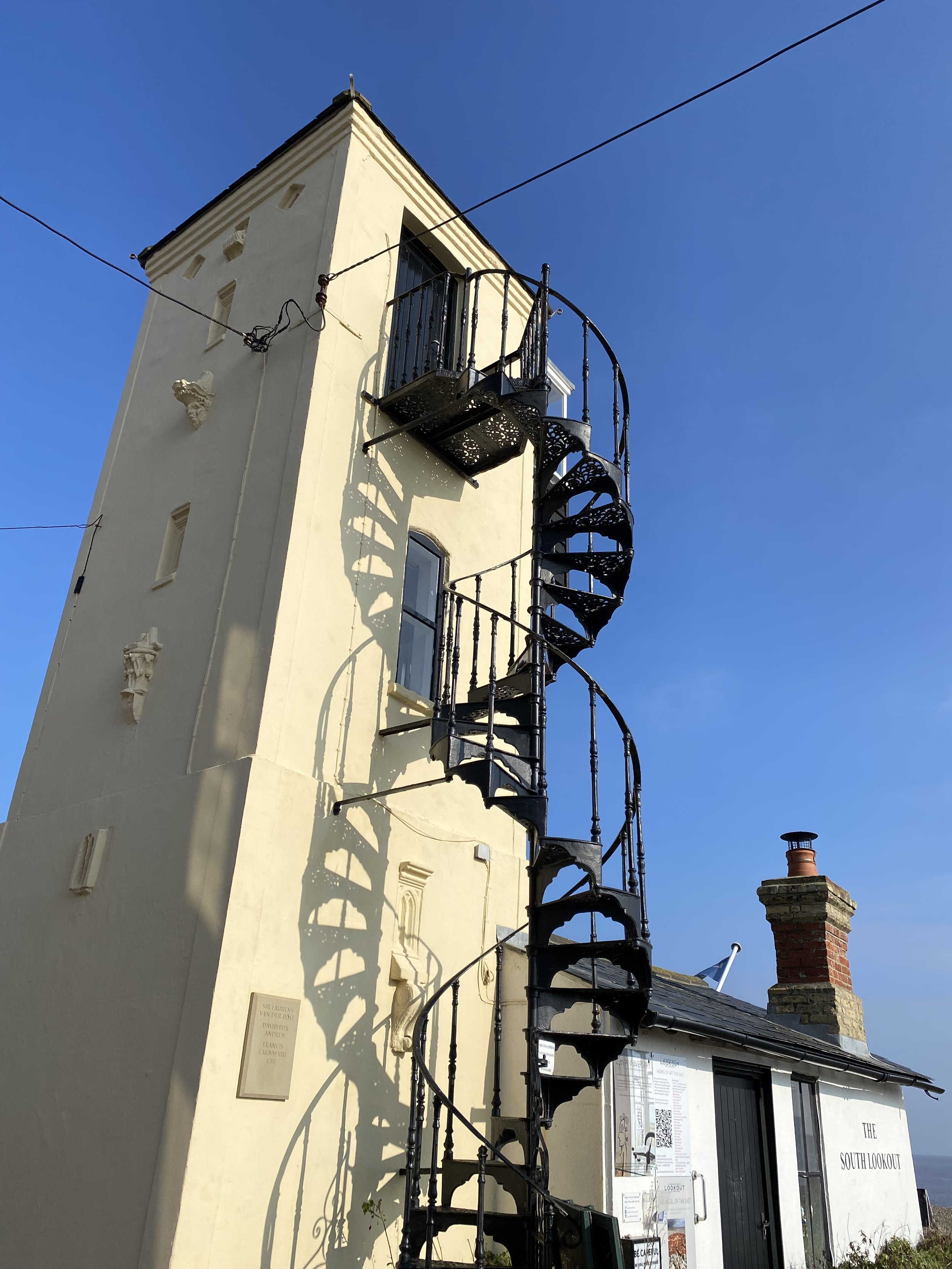The Aldeburgh Beach Lookout.
Benjamin Britten’s riveting opera, Peter Grimes, is set in Aldeburgh, at a time when it was a thriving fishing community. Fishermen and beach men would have crowded on to this shingle beach, hauling in huge catches of fish - mainly sprat and herring.
A little further out to sea sailed the numerous ships transporting their cargo from Europe and the North of England to London. They needed pilots who knew the treacherous East Coast waters to navigate them safely onwards. Lookouts, like this one on Aldeburgh beach, stood high up on towers all along the coast, and as soon as they spied a distress signal they called out to pilots and their beach men. These men would then race out in rowing boats to the troubled ship, to do the commercial business of rescuing or salvaging.
There are only two Lookouts still standing on Britain’s East Coast. The former, nicknamed ‘the Downstreeters’ was in competition with the South Lookout, ‘the Upstreeters’. They did their divvying up of profits in different local pubs. The ground floor of the Lookout was not a boathouse, but was called the court and was a gathering place for the staff.
Then in 2010, an art dealer, Caroline Wiseman, was about to swim in the sea one morning, when she noticed the TO LET sign on the South Lookout. While she swam, she dreamed that the lookout could be a place of creativity for artists, writers, poets and thinkers of all descriptions and from all over the world. She and her partner Francis Carnwath bought the South Lookout as well as the blue house opposite. They named this house ‘The Art House’, as it hung with works of art by all the artists they have known over many years.
Now, just a few years later, hundreds of creative people have drawn inspiration from this bleak yet compellingly beautiful landscape. Many have had residencies when they take over the tower for a week and create brand new works. Remote, yet at the heart of cultural innovation, this tiny art temple has become an extraordinary catalyst for new ideas.
In 1989, Trinity House decreed that henceforth lookouts could only operate from Harwich, and so both N and S lookouts became redundant. The N Lookout was taken over by the RNLI, but for a century, the S Lookout found it difficult to find a new purpose in life. It became simply an occasional meeting place for cold fishermen, hence the fireplace. Some artists came to paint at the top of the tower, notably Richard Bawden and Margaret Thomas. Dame Gillian Wagner wrote her book on Dr. Barnado at the top, and Sir Laurens van der Post wrote about his adventures in Africa every morning during the summer months for over 30 years in the middle room.
Opposite the S Lookout, was the ‘rocket shop’ from where rockets were fired to rescue crew from capsizing boats. During the 20th century, stone ornaments were placed on the tower of the S Lookout. There are many myths - maybe the ornaments came from the long drowned churches from the lost towers of Dunwich? Maybe from the ruined church at Haselwood a couple of miles inland?



